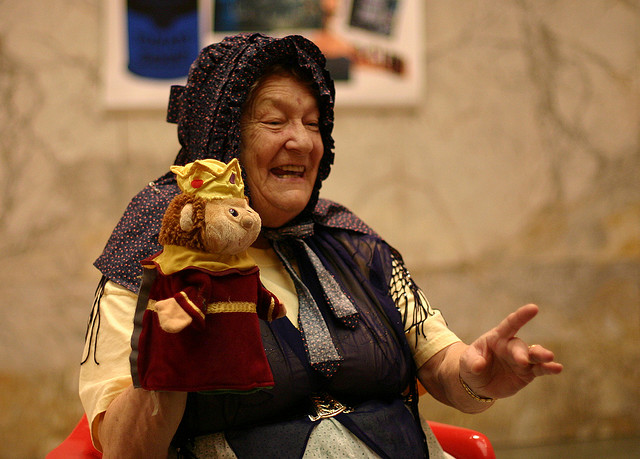Congratulations! You just got the call – you’ve been asked to start a data team to extract valuable customer insights from your product usage, improve your company’s marketing effectiveness, or make your boss look all “data-savvy” (hopefully not just the last one of these). And even better, you’ve been given carte blanche to go hire the best people! But now the panic sets in – who do you hire? Here’s a handy guide to the seven people you absolutely have to have on your data team. Once you have these seven in place, you can decide whether to style yourself more on John Sturges or Akira Kurosawa.
Before we start, what kind of data team are we talking about here? The one I have in mind is a team that takes raw data from various sources (product telemetry, website data, campaign data, external data) and turns it into valuable insights that can be shared broadly across the organization. This team needs to understand both the technologies used to manage data, and the meaning of the data – a pretty challenging remit, and one that needs a pretty well-balanced team to execute.
1. The Handyman

The Handyman can take a couple of battered, three-year-old servers, a copy of MySQL, a bunch of Excel sheets and a roll of duct tape and whip up a basic BI system in a couple of weeks. His work isn’t always the prettiest, and you should expect to replace it as you build out more production-ready systems, but the Handyman is an invaluable help as you explore datasets and look to deliver value quickly (the key to successful data projects). Just make sure you don’t accidentally end up with a thousand people accessing the database he’s hosting under his desk every month for your month-end financial reporting (ahem).
Really good handymen are pretty hard to find, but you may find them lurking in the corporate IT department (look for the person everybody else mentions when you make random requests for stuff), or in unlikely-seeming places like Finance. He’ll be the person with the really messy cubicle with half a dozen servers stuffed under his desk.
The talents of the Handyman will only take you so far, however. If you want to run a quick and dirty analysis of the relationship between website usage, marketing campaign exposure, and product activations over the last couple of months, he’s your guy. But for the big stuff you’ll need the Open Source Guru.
2. The Open Source Guru

I was tempted to call this person “The Hadoop Guru”. Or “The Storm Guru”, or “The Cassandra Guru”, or “The Spark Guru”, or… well, you get the idea. As you build out infrastructure to manage the large-scale datasets you’re going to need to deliver your insights, you need someone to help you navigate the bewildering array of technologies that has sprung up in this space, and integrate them.
Open Source Gurus share many characteristics in common with that most beloved urban stereotype, the Hipster. They profess to be free of corrupting commercial influence and pride themselves on plowing their own furrow, but in fact they are subject to the whims of fashion just as much as anyone else. Exhibit A: The enormous fuss over the world-changing effects of Hadoop, followed by the enormous fuss over the world-changing effects of Spark. Exhibit B: Beards (on the men, anyway).
So be wary of Gurus who ascribe magical properties to a particular technology one day (“Impala’s, like, totally amazing”), only to drop it like ombre hair the next (“Impala? Don’t even talk to me about Impala. Sooooo embarrassing.”) Tell your Guru that she’ll need to live with her recommendations for at least two years. That’s the blink of an eye in traditional IT project timescales, but a lifetime in Internet/Open Source time, so it will focus her mind on whether she really thinks a technology has legs (vs. just wanting to play around with it to burnish her resumé).
3. The Data Modeler

While your Open Source Guru can identify the right technologies for you to use to manage your data, and hopefully manage a group of developers to build out the systems you need, deciding what to put in those shiny distributed databases is another matter. This is where the Data Modeler comes in.
The Data Modeler can take an understanding of the dynamics of a particular business, product, or process (such as marketing execution) and turn that into a set of data structures that can be used effectively to reflect and understand those dynamics.
Data modeling is one of the core skills of a Data Architect, which is a more identifiable job description (searching for “Data Architect” on LinkedIn generates about 20,000 results; “Data Modeler” only generates around 10,000). And indeed your Data Modeler may have other Data Architecture skills, such as database design or systems development (they may even be a bit of an Open Source Guru). But if you do hire a Data Architect, make sure you don’t get one with just those more technical skills, because you need datasets which are genuinely useful and descriptive more than you need datasets which are beautifully designed and have subsecond query response times (ideally, of course, you’d have both). And in my experience, the data modeling skills are the rarer skills; so when you’re interviewing candidates, be sure to give them a couple of real-world tests to see how they would actually structure the data that you’re working with.
4. The Deep Diver

Between the Handyman, the Open Source Guru, and the Data Modeler, you should have the skills on your team to build out some useful, scalable datasets and systems that you can start to interrogate for insights. But who to generate the insights? Enter the Deep Diver.
Deep Divers (often known as Data Scientists) love to spend time wallowing in data to uncover interesting patterns and relationships. A good one has the technical skills to be able to pull data from source systems, the analytical skills to use something like R to manipulate and transform the data, and the statistical skills to ensure that his conclusions are statistically valid (i.e. he doesn’t mix up correlation with causation, or make pronouncements on tiny sample sizes). As your team becomes more sophisticated, you may also look to your Deep Diver to provide Machine Learning (ML) capabilities, to help you build out predictive models and optimization algorithms.
If your Deep Diver is good at these aspects of his job, then he may not turn out to be terribly good at taking direction, or communicating his findings. For the first of these, you need to find someone that your Deep Diver respects (this could be you), and use them to nudge his work in the right direction without being overly directive (because one of the magical properties of a really good Deep Diver is that he may take his analysis in an unexpected but valuable direction that no one had thought of before).
For the second problem – getting the Deep Diver’s insights out of his head – pair him with a Storyteller (see below).
5. The Storyteller

The Storyteller’s yin is to the Deep Diver’s yang. Storytellers love explaining stuff to people. You could have built a great set of data systems, and be performing some really cutting-edge analysis, but without a Storyteller, you won’t be able to get these insights out to a broad audience.
Finding a good Storyteller is pretty challenging. You do want someone who understands data quite well, so that she can grasp the complexities and limitations of the material she’s working with; but it’s a rare person indeed who can be really deep in data skills and also have good instincts around communications.
The thing your Storyteller should prize above all else is clarity. It takes significant effort and talent to take a complex set of statistical conclusions and distil them into a simple message that people can take action on. Your Storyteller will need to balance the inherent uncertainty of the data with the ability to make concrete recommendations.
Another good skill for a Storyteller to have is data visualization. Some of the most light bulb-lighting moments I have seen with data have been where just the right visualization has been employed to bring the data to life. If your Storyteller can balance this skill (possibly even with some light visualization development capability, like using D3.js; at the very least, being a dab hand with Excel and PowerPoint or equivalent tools) with her narrative capabilities, you’ll have a really valuable player.
There’s no one place you need to go to find Storytellers – they can be lurking in all sorts of fields. You might find that one of your developers is actually really good at putting together presentations, or one of your marketing people is really into data. You may also find that there are people in places like Finance or Market Research who can spin a good yarn about a set of numbers – poach them.
6. The Snoop

These next two people – The Snoop and The Privacy Wonk – come as a pair. Let’s start with the Snoop. Many analysis projects are hampered by a lack of primary data – the product, or website, or marketing campaign isn’t instrumented, or you aren’t capturing certain information about your customers (such as age, or gender), or you don’t know what other products your customers are using, or what they think about them.
The Snoop hates this. He cannot understand why every last piece of data about your customers, their interests, opinions and behaviors, is not available for analysis, and he will push relentlessly to get this data. He doesn’t care about the privacy implications of all this – that’s the Privacy Wonk’s job.
If the Snoop sounds like an exhausting pain in the ass, then you’re right – this person is the one who has the team rolling their eyes as he outlines his latest plan to remotely activate people’s webcams so you can perform facial recognition and get a better Unique User metric. But he performs an invaluable service by constantly challenging the rest of the team (and other parts of the company that might supply data, such as product engineering) to be thinking about instrumentation and data collection, and getting better data to work with.
The good news is that you may not have to hire a dedicated Snoop – you may already have one hanging around. For example, your manager may be the perfect Snoop (though you should probably not tell him or her that this is how you refer to them). Or one of your major stakeholders can act in this capacity; or perhaps one of your Deep Divers. The important thing is not to shut the Snoop down out of hand, because it takes relentless determination to get better quality data, and the Snoop can quarterback that effort. And so long as you have a good Privacy Wonk for him to work with, things shouldn’t get too out of hand.
7. The Privacy Wonk

The Privacy Wonk is unlikely to be the most popular member of your team, either. It’s her job to constantly get on everyone’s nerves by identifying privacy issues related to the work you’re doing.
You need the Privacy Wonk, of course, to keep you out of trouble – with the authorities, but also with your customers. There’s a large gap between what is technically legal (which itself varies by jurisdiction) and what users will find acceptable, so it pays to have someone whose job it is to figure out what the right balance between these two is. But while you may dread the idea of having such a buzz-killing person around, I’ve actually found that people tend to make more conservative decisions around data use when they don’t have access to high-quality advice about what they can do, because they’re afraid of accidentally breaking some law or other. So the Wonk (much like Sadness) turns out to be a pretty essential member of the team, and even regarded with some affection.
Of course, if you do as I suggest, and make sure you have a Privacy Wonk and a Snoop on your team, then you are condemning both to an eternal feud in the style of the Corleones and Tattaglias (though hopefully without the actual bloodshed). But this is, as they euphemistically say, a “healthy tension” – with these two pulling against one another you will end up with the best compromise between maximizing your data-driven capabilities and respecting your users’ privacy.
Bonus 8th member: The cat herder (you!)
The one person we haven’t really covered is the person who needs to keep all of the other seven working effectively together: To stop the Open Source Guru from sneering at the Handyman’s handiwork; to ensure the Data Modeler and Deep Diver work together so that the right measures and dimensionality are exposed in the datasets you publish; and to referee the debates between the Snoop and the Privacy Wonk. This is you, of course – The Cat Herder. If you can assemble a team with at least one of the above people, plus probably a few developers for the Open Source Guru to boss about, you’ll be well on the way to unlocking a ton of value from the data in your organization.
Think I’ve missed an essential member of the perfect data team? Tell me in the comments.

Who’s managing your Snoops these days?
Darrin: It’s more the other way around 🙂
Great !
just a few suggestions : I would have named “the open source guru” as a “data geek”. As defined in wikipedia ” eccentric or non-mainstream people; in current use, the word typically connotes an expert or enthusiast or a person obsessed with a hobby or intellectual pursuit, with a general pejorative meaning of a “peculiar or otherwise dislikable person, esp[ecially] one who is perceived to be overly intellectual”
The data modeler is also a guadian of the temple for definition and business rules.
One of the best texts I ve read lately….I do not know how I did not come across it earlier. Great sarcastic way of writting. Love. Like. +